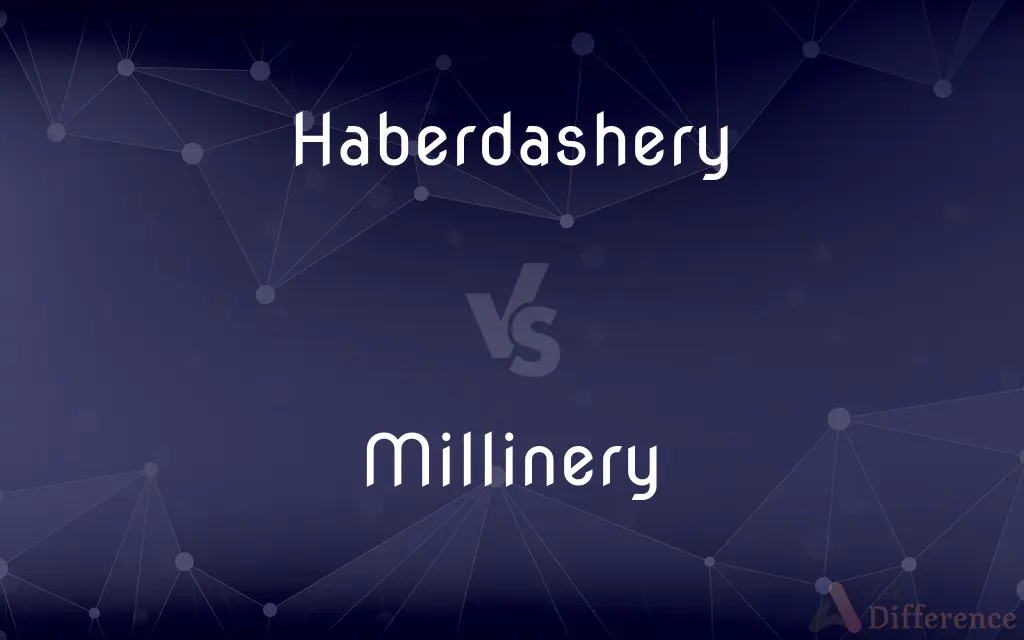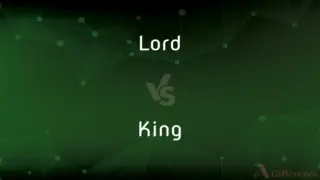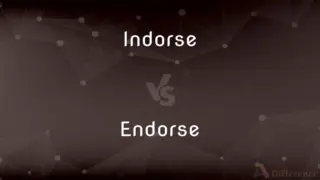Haberdashery vs. Millinery — What's the Difference?
By Tayyaba Rehman — Updated on November 4, 2023
Haberdashery sells men's clothing accessories; millinery is women's hat making.

Difference Between Haberdashery and Millinery
Table of Contents
ADVERTISEMENT
Key Differences
Haberdashery traditionally refers to a store or the trade of selling small items used for sewing, such as buttons, zippers, and threads, as well as men's clothing accessories like belts and ties. It's often associated with items that are useful for personal tailoring or dressmaking. Conversely, millinery is specifically focused on the design, manufacture, and sale of hats and headwear for women, an art form that demands a blend of fashion sense and technical skill.
In a haberdashery, one might find a range of products for men's suiting, including cufflinks, pocket squares, and socks. These establishments cater to those looking to add finishing touches to men's outfits. Millinery, however, is not just retail but an artisan craft, with milliners creating bespoke hats, from elegant fascinators to practical sunhats, which involve techniques such as sewing, embellishing, and shaping materials.
While haberdashery includes a broad range of items and may also offer services such as custom tailoring, millinery is more specialized, with a narrower focus. Milliners, akin to couturiers in the world of fashion, often work with a variety of fabrics and decorations like ribbons, feathers, and beads to create fashionable headwear, making the field of millinery an intersection of art and fashion.
In terms of their historical context, haberdashers have been essential purveyors in men’s fashion for centuries, supplying the necessary components for maintaining and creating garments. Millinery has its own rich history, with its name deriving from the city of Milan, Italy, known for producing quality decorative items used in hat-making. Millinery remains a bespoke craft that reflects the ever-changing trends in women's fashion.
To conclude, while haberdashery is associated with a wider range of sewing notions and men's accessories, millinery is dedicated to the craft and commerce of women's hats. The expertise required for each is distinct, with haberdashery being the domain of tailors and clothiers, and millinery being the realm of designers and artisans focused on headwear.
ADVERTISEMENT
Comparison Chart
Primary Focus
Men's clothing accessories, sewing notions.
Women's hats and headwear.
Associated Items
Buttons, zippers, ties, cufflinks.
Hats, fascinators, bonnets.
Customer Base
Primarily men, tailors, and dressmakers.
Primarily women, hat enthusiasts.
Craft or Trade
Retail and tailoring supplies.
Artisan craft of hat-making.
Historical Origin
English term, general small wares merchant.
Named after Milan, associated with quality hat-making.
Compare with Definitions
Haberdashery
A shop selling men's accessories and tailoring supplies.
He picked up some new ties from the local haberdashery.
Millinery
The creations produced by a milliner, typically hats.
Her millinery skills were evident in the intricate designs of her hats.
Haberdashery
Merchandise or stores that supply men's dress accessories.
For my wedding, I'll need to stop by the haberdashery for a bow tie and cufflinks.
Millinery
The industry or business of making hats for women.
She opened her own millinery shop after years of working in fashion.
Haberdashery
Small articles for sewing, such as buttons and zippers.
She visited the haberdashery to buy buttons for her coat.
Millinery
Headgear and accessories created specifically for women.
The royal wedding showcased some of the most elaborate millinery.
Haberdashery
A business specializing in products for men's apparel.
The haberdashery downtown also offers custom suit fittings.
Millinery
A store where women's hats are sold.
The new millinery on Main Street has the latest in summer headwear.
Haberdashery
A haberdasher's shop.
Millinery
Articles, especially women's hats, sold by a milliner.
Haberdashery
The goods and wares sold by a haberdasher.
Millinery
The profession or business of a milliner.
Haberdashery
Ribbons, buttons, thread, needles and similar sewing goods sold in a haberdasher's shop.
Millinery
Women's hats.
Haberdashery
A shop selling such goods.
Millinery
(countable) A shop selling women's hats.
Haberdashery
A shop selling clothing and accessories for men, including hats.
Millinery
(uncountable) The business and work that a milliner engages in.
Haberdashery
The goods and wares sold by a haberdasher; also (Fig.), trifles.
Millinery
The articles made or sold by milliners, as headdresses, hats or bonnets, laces, ribbons, and the like.
Haberdashery
A store where men's clothes are sold
Millinery
The business of work of a milliner.
Haberdashery
The drygoods sold by a haberdasher
Millinery
Shop selling women's hats
Haberdashery
A retailer of various items for home tailoring.
Their haberdashery section has a great selection of threads and needles.
Millinery
Hats for women; the wares sold by a milliner
Millinery
The craft or trade of designing and making women's hats.
She studied millinery because she was fascinated by fashion design.
Common Curiosities
Are haberdasheries for professional tailors only?
No, haberdasheries cater to both professionals and hobbyists.
What does haberdashery sell?
Haberdashery sells sewing notions and men’s accessories.
Can I find fabric in a haberdashery?
Some haberdasheries do stock a selection of fabrics.
Does millinery include making veils?
Yes, millinery can include designing and creating veils.
Are millinery products only for women?
Yes, millinery traditionally focuses on women’s hats.
What skills do haberdashers have?
Haberdashers are knowledgeable about tailoring, sewing, and fashion accessories.
Is millinery considered a form of art?
Yes, millinery is often regarded as an art due to its creative nature.
Are there still traditional millinery shops?
Yes, traditional millinery shops still exist and thrive.
Could I find a belt in a haberdashery?
Yes, belts are commonly sold in haberdasheries.
How has millinery changed over time?
Millinery has evolved with fashion trends and new materials.
Do haberdasheries offer sewing services?
Some may offer services like alterations and custom tailoring.
Do haberdasheries only sell accessories?
Primarily, but some may offer a wider range of products including clothing.
What’s the difference between a haberdasher and a tailor?
A haberdasher sells accessories; a tailor alters and makes clothing.
Can men find hats in a millinery?
Typically, millinery focuses on women’s styles, but some may offer men’s hats.
Is millinery training available?
Yes, there are courses and apprenticeships in millinery.
Share Your Discovery

Previous Comparison
Lord vs. King
Next Comparison
Indorse vs. EndorseAuthor Spotlight
Written by
Tayyaba RehmanTayyaba Rehman is a distinguished writer, currently serving as a primary contributor to askdifference.com. As a researcher in semantics and etymology, Tayyaba's passion for the complexity of languages and their distinctions has found a perfect home on the platform. Tayyaba delves into the intricacies of language, distinguishing between commonly confused words and phrases, thereby providing clarity for readers worldwide.














































